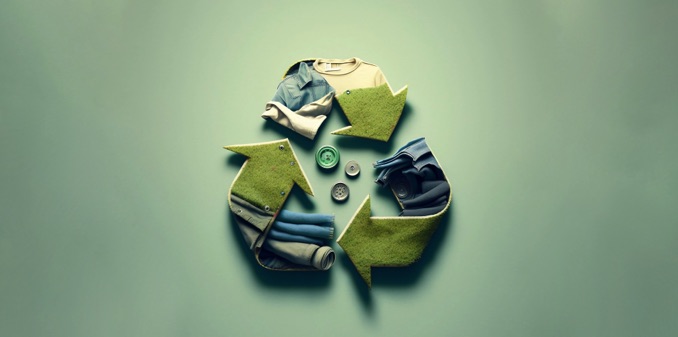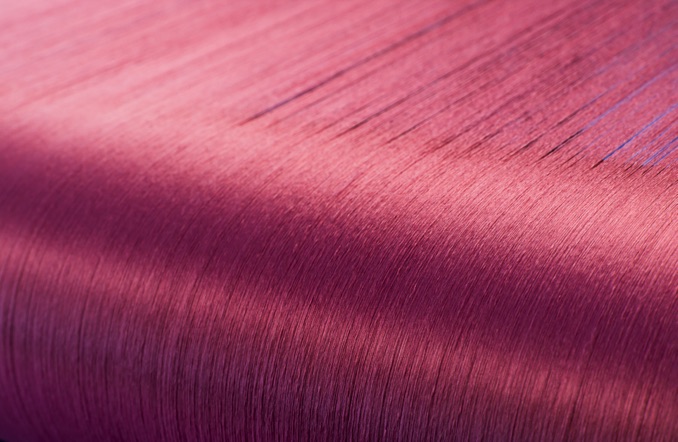Smart Key: Key choices for more responsible sourcing The - Yarns and fibers - Première Vision Paris - Denim Première Vision - Première Vision New York
Sourcing responsibly sometimes feels like searching for the Holy Grail. What material can be creative, and adapt to the look of the product, while also having the least possible impact on the environment and providing social guarantees? Let’s face it: there is no such thing as a material with zero impact. Perfection may be unattainable, but the fashion industry has a wide range of possibilities within its reach to improve its environmental and social performance.
Don’t have time to read the full article? Here’s what you need to know.
Responsible sourcing
– Step 1: analyse and prioritise
Before rushing into choosing a material, or adopting the latest buzzy fiber, you need to review your overall offering. Study material volumes by fiber category and inventory volumes to determine where the impacts and levers for change lie.
Replacing a conventional material with a recycled or organic one doesn’t necessarily make sense if your dormant stocks are large: these materials could be redyed, embroidered, or printed to get a new lease on life.

Analysis is the first step in identifying how to transform your materials reserve.
Responsible sourcing
– Step 2: examine and choose
Once you have identified your priorities, the next step is to transform your supply chain.
The core idea is to go further than the simple composition criteria. A responsible approach is holistic, taking into account different aspects linked to the supplier and to the material itself. There are 2 fundamental dimensions: the company’s commitments, and the characteristics of the material. Within these 2 dimensions, 5 key pillars are to be taken into account when making choices.
Dimension 1: at the company level

1. Social initiatives
An analysis of social risks, working conditions guaranteeing health, safety, minimum rest and vacations, diversity, inclusion, and respect for the legal minimum wage with an aim to achieve a living wage, should help you evaluate your supplier’s involvement. Compliance with ISO 45001 or SA8000 should also be examined.
2. Production sites impacts
Environmental management at production sites is fundamental. ISO 14001, EMAS, or LWG can help you find partners that are committed to the continuous improvement of their production model. The use of renewable energies should be encouraged to address the CO2 emissions linked to the material transformation stages.
The use of hazardous substances should be controlled, in particular via Oeko-tex standard 100, or for the most advanced by formalizing an MRSL (Manufacturing Restricted Substances List) that your supplier must commit to abide by. Downstream, ensuring that wastewater and waste treatment measures are being implemented is crucial to completing your analysis.
Dimension 2: at the level of materials

3. Traceability
The traceability of fabrics and leathers makes it possible to know whether the raw material comes from a high-risk area, in terms of human rights, animal welfare, or environmental risks (deforestation or over-exploitation of natural resources). In addition, current regulations in France—which are also under study in the European Union and the United States—require manufacturers to identify the origins of supplies at every stage of the value chain.
4. Finished product durability and end-of-life
Whatever its composition, a material must be able to withstand use. Various tests for color fastness, dimensional stability, tensile strength, and abrasion resistance will help optimize newly developed materials for maximum performance over time.
At the end of its life cycle, the material may have different characteristics. If their composition has been carefully considered, some fabrics will be more easily recyclable, if they are single-material; include less than 5% elastane, ideally 2%; or present no coating or membrane, for example. Some materials also offer optimized biodegradability or even compostability. In this case, it’s important to ensure through specific tests thatthe finished product meets these requirements.
5. Product composition/processes
There is no such thing as a responsible material per se, and no miracle option. The most appropriate choice is made by taking into consideration your expectations in terms of style—the fiber’s characteristics and its behavior: strength, fluidity, softness, breathability, etc.—as well as the material’s environmental impact.
Overview of the best-known fibers
Cotton
Qualities
- Second most used fiber: 1/3 of global demand
- Soft and comfortable
- Breathable and hypoallergenic
Impacts
- Very high environmental impacts due to high usage of pesticides and fertilizers
- Unsustainable water consumption
- Social impacts: forced labor and child labor.
Sourcing tips
- GRS, RCS recycled cotton reduces the impacts of virgin fiber.
- Regenerative GOTS, OCS & organic cotton reduces the use of synthetic chemicals and water, but is only 1% of world production.
- Buy in-conversion cotton to support increased organic cotton production
- Avoid high risk countries, request your suppliers sign the Cotton Pledges Against Forced Labor.
- Fairtrade & GOTS cotton provide assurances.
Read also: Smart Key: A look inside the hidden face of cotton
Flax
Qualities
- Natural
- Highly technical: thermo-regulation, durability, breathability
- Ecological culture using only rainwater, few chemicals and regenerating the soil
- Zero-waste production
Impacts
- Wet retting can impact water resources.
Sourcing tips
- The European Flax™ & Masters of Linen® labels guarantee premium quality with high environmental performances.
- GOTS, OCS or organic flax ensures no chemical inputs or GM seeds are used.
- Prefer dry retting to avoid water impacts.
Wool – Mohair & cashmere
Qualities
- Natural fiber
- Versatile
- Thermal qualities
Impacts
- Animal welfare: mulesing, shearing & handling, poor farming practices.
- Land degradation: overgrazing and soil erosion.
- Use of fertilizers and chemicals for pasture maintenance & pest-control.
Sourcing tips
- RWS guarantees high level of animal welfare.
- GOTS, OCS & organic standards reduce chemical inputs and ecosystems degradation.
- GRS, RCS recycled wool avoid impacts of virgin fibers.
Synthetic fibers – PE, PA & EA
Qualities
- Man-made
- High-performance: elasticity, moisture management, resistance, easycare
- Contemporary and most used fibers
Impacts
- Derived from non-renewable fossil fuels (oil).
- Generate high greenhouse gas emissions.
- High energy and chemical use.
- Shed non-biodegradable microplastics accumulating in the environment & food chains.
Sourcing tips
Avoid impacts of virgin fossil fibers:
- GRS, RCS recycled fibers are now 15% of global market.
- Certified bio-based materials: prefer waste products over virgin source material, verify nature, origin and % of raw material
- At end of life, no solution yet to microfiber shedding: bio-based synthetics are not necessarily biodegradable or compostable.
Read also: Smart Key: Elasticity: What’s the environmental impact of the elastane in our clothing?
Silk
Qualities
- Ultrafine yet strong
- Luxurious
- Thermal
Impacts
- High water consumption.
- High chemical use in cultivation and processing.
- Natural ecosystems degradation of mulberry-tree cultivation.
- Unfavorable work conditions.
Sourcing tips
- GOTS, OCS or organic maximize ecological sustainability, reduce chemical inputs in cultivation and processing.
- GOTS includes compliance with social criteria.
- GRS, RCS recycled silk avoid impacts of virgin fibers.
Viscose & cellulosic fibers
Qualities
- Man-made fibers derived from renewable wood
- Fresh & crisp feel
- Fluidity
- High water absorption
Impacts
- Linked to deforestation of protected forests.
- Causes loss of biodiversity and climate change.
- Heavy use of toxic chemicals in production.
Sourcing tips
Against deforestation:
- Canopystyle audits guarantee higher sustainability performance of 60% of suppliers today.
- FSC, PEFC wood sources ensure sustainable forest management.
- GRS, to favor 2nd generation cellulosic thanks to the use of chemically recycled cotton.
- Agriculture residues, co-products of agri-food industry are a growing source of raw materials to replace virgin cellulose.
To reduce toxic chemical impacts:
- Closed-loop processes where nontoxic solvents are recycled back into the system are used for Lyocell & trademarked brands: Naia, Tencel, Newcell, Ecovero…
Read also: Smart Key: What’s behind the seeming “naturalness” of cellulosic materials?

KEY TAKEAWAYS
There are two key aspects to sustainable sourcing.
1/ Analyse and prioritise. This involves an overall diagnosis of the company’s materials reserve (material volumes by fiber category and inventory volumes), to to determine where the impacts and levers for change lie.
2/ Examine and choose. You need to go beyond the composition of the material, and look at the supplier’s commitments. The supplier company must offer social initiatives (decent wages, employee health protection, etc.) and limit the impact of its production sites (use of renewable energies, ISO 14001 standard, etc.).
When it comes to materials, there are several aspects to consider: fabric and leather traceability, product durability (tensile strength, color fastness, etc.), as well as exact composition and transformation processes. Each fiber has its own qualities and impacts. To reduce these, it is essential to follow appropriate sourcing advice and to rely on the guarantee of quality offered by certain labels (GOTS, FSC, etc.).
In short, there are no ready-made answers to your specific questions. Each situation requires a custom analysis grid. Our program “a better way” was conceived to help guide you towards the most appropriate solutions by analyzing the offer from the Première Vision exhibitors, and is your ally in the development of your socially and environmentally committed collections.
